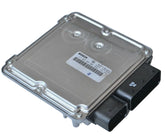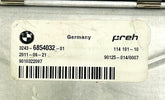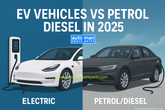Introduction
At www.automanspareparts.com, we’ve seen the auto parts industry evolve dramatically over the past decade. From electric vehicles to AI-based diagnostics, technology is redefining how vehicles function and are maintained. One of the most disruptive innovations shaping this transformation is 3D printing—a technology that’s not just futuristic anymore but a real game-changer in the auto parts manufacturing and supply chain industry.
This blog dives deep into how 3D printing is revolutionizing auto parts, the benefits and challenges it presents, and how it’s redefining the future of automotive maintenance, repair, and production.
What is 3D Printing in Auto Parts?
3D printing, or additive manufacturing, is a process of creating physical objects layer by layer using digital models. In the context of auto parts, it means producing components directly from a digital design, often in metal, plastic, or composite materials.
| Aspect | Traditional Manufacturing | 3D Printing |
|---|---|---|
| Production Time | Weeks to months | Hours to days |
| Customization | Limited | Fully customizable |
| Cost Efficiency | High for small batches | Lower for low-volume production |
| Waste Generation | Significant | Minimal |
| Supply Chain Dependence | Heavy | Reduced |
How 3D Printing is Changing the Auto Parts Industry
1. Faster Prototyping and Production
Car manufacturers can now create functional prototypes of new parts in a matter of hours. This accelerates research and development, reducing time to market for new models and parts.
2. Customization and On-Demand Parts
3D printing allows the creation of custom-fit or rare components that are otherwise hard to find or no longer produced. This is a breakthrough for classic car restorations and custom performance vehicles.
3. Sustainable Manufacturing
With less material waste and local production, 3D printing supports a greener, more sustainable automotive industry. It significantly reduces the carbon footprint of traditional auto part logistics and warehousing.
4. Reduced Supply Chain Pressure
Instead of waiting for international shipments, auto workshops and distributors can print parts locally and on demand. This is especially valuable for remote regions or during global supply disruptions.
5. Enhanced Durability and Lightweight Designs
3D-printed parts can be optimized for strength-to-weight ratio, improving vehicle performance and fuel efficiency without compromising safety.
Real-World Applications of 3D Printing in Auto Parts
| Automotive Brand | 3D Printing Application |
|---|---|
| Ford | Uses 3D printing for prototype engine parts and brackets |
| BMW | Produces custom tools and lightweight car components |
| Porsche | 3D prints classic car parts for discontinued models |
| General Motors | Uses additive manufacturing to reduce design cycles |
| Local Garages & Distributors | Printing rare or discontinued spare parts |
Challenges and Limitations
While promising, 3D printing faces challenges before it becomes mainstream:
-
Material limitations (not all alloys or plastics are printable yet)
-
Certification and safety standards for critical components
-
Initial equipment costs for large-scale manufacturing
-
Training needs for technicians and part designers
Despite these, the pace of development shows that additive manufacturing will soon be a core part of automotive production.
The Future Outlook
The global 3D printing automotive market is projected to surpass $12 billion by 2030, driven by increased adoption among OEMs and aftermarket suppliers. The trend indicates:
-
Widespread digitization of spare parts catalogs
-
Localized printing hubs for faster deliveries
-
A reduction in counterfeit parts through digital authentication
-
Improved sustainability and cost control
For auto part distributors like AutoMan Spare Parts, this future offers exciting opportunities to integrate 3D printing solutions and provide customers with faster, more customizable, and reliable spare parts worldwide.
FAQ – Future of Auto Parts & 3D Printing
Q1. Will 3D printing replace traditional manufacturing?
Not entirely. 3D printing complements traditional methods by improving prototyping, customization, and small-batch production efficiency.
Q2. Are 3D-printed auto parts safe for real-world use?
Yes, when produced using certified materials and processes. Many leading automakers already use 3D-printed parts in test vehicles and limited production models.
Q3. How does 3D printing reduce costs for spare parts?
It eliminates the need for large inventories, shipping delays, and mold-making—leading to lower costs and faster availability.
Q4. Can I order 3D-printed parts from AutoMan Spare Parts?
We are closely following advancements in this field and plan to offer digitally produced and certified 3D-printed components in the near future to serve our global customers.
TL;DR
3D printing is reshaping the future of auto parts with faster production, reduced waste, and better customization. While it won’t replace traditional manufacturing entirely, its adoption across the automotive world—from major brands to local repair shops—is inevitable. The coming years will see more sustainable, efficient, and customer-focused auto part solutions.







